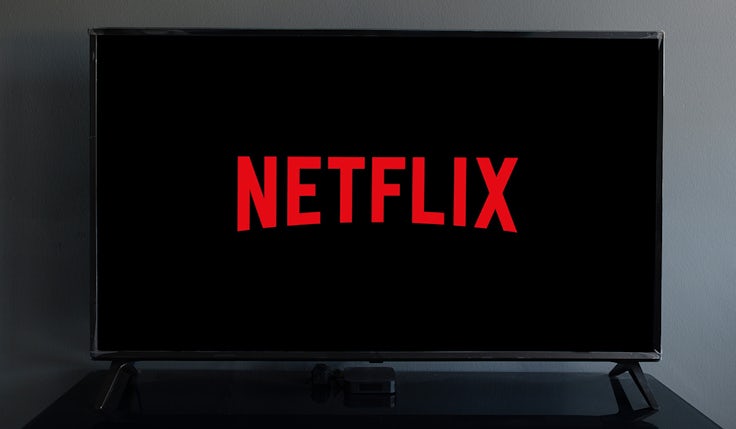Netflix wants to create ‘buzzier’ marketing as the streaming giant ramps up ad-supported tier
Netflix to expand its crackdown on password-sharing next quarter, as it reports its Q1 results.
 Netflix says its its ad-supported subscription is performing well, after it began rolling out the lower-priced tier in November last year. A number of evolutinary changes to the tier are now planned.
Netflix says its its ad-supported subscription is performing well, after it began rolling out the lower-priced tier in November last year. A number of evolutinary changes to the tier are now planned.
“While it’s still very early days, we continue to be pleased with our progress across all key dimensions: member experience, value to advertisers and incremental contribution to our business,” the company said in its Q1 financial statement.
In terms of the “variety and quality” of Netflix’s roster, Netflix co-chief executive Ted Sarandos said yesterday (18 April) on its earnings call that the platform is “Going to keep working to improve discovery, to have buzzier and more creative marketing, because when we deliver for our members, we deliver as a business.
“And we keep doing that by doing it just a bit better and a bit faster than our competition every month, every quarter and every year,” he added.
Netflix eyes ad potential as subscribers fallNetflix’s marketing spend for 2023’s first quarter is consistent with the same period in 2022. In the three months to 31 March 2023, the company spent $555.36m (£445.7m) on marketing compared with $555.97m (£446m) in 2022.
Netflix added 1.75m streaming subscribers in the first three months of 2023. A year earlier the company posted a loss of 200,000 subscribers in the same period. Netflix now has 232.5m global paid subscribers.
Sharing its Q1 results, Netflix reported a profit of $1.31bn (£1.1bn), slightly over the $1.3bn (£1bn) analysts expected. Meanwhile, the company posted revenue of $8.16bn (£6.5bn).
“We are growing and we are profitable,” said Sarandos. “We have a clear path to accelerate growth in both revenue and profit, and we’re executing it.”
A new era
A year ago, Netflix hinted at its intention to explore ad revenue after the platform lost subscribers. Posting its Q1 results a year on, Netflix said engagement with the recently-introduced ad-supported tier is above its initial expectations, and that “as expected” it’s seeing few customers switching to it from standard and premium plans.
“We are pleased with the current performance and trajectory of our per-member advertising economics. In the US for instance, our ads plan already has a total ARM (subscription + ads) greater than our standard plan,” Netflix added.
The platform is evolving its ad-supported tier. It’ll be boosting video quality to 1080p from 720p, and will allow two concurrent steams in its 12 markets where the option is available, beginning with Canada and Spain before rolling out more broadly.
Wondering why Netflix wants to stop password-sharing? It’s all about funnelsThis all comes back to Netflix’s mission to come down hard on password sharing. Citing that more than 100m households engage in sharing their accounts, the platform said this “undermines” its ability to invest in and improve the business.
In response, Netflix launched a “paid sharing” service to allow customers to share their accounts with people outside their household at cost.
“We’re pleased with the results of our Q1 launches in Canada, New Zealand, Spain and Portugal, strengthening our confidence that we have the right approach,” the platform said.
However, the measure has resulted in a “cancel reaction” when introduced in some markets, such as Latin America, impacting “near term member growth”.
“But as borrowers start to activate their own accounts and existing members add “extra member” accounts, we see increased acquisition and revenue,” it said.
Netflix overtakes Aldi to become the top UK brandNetflix uses Canada as a “reliable predictor” for the US market, and said the country’s paid membership base is now larger than before it launched paid sharing. Revenue growth has accelerated and is growing “faster” than in the US.
The platform said it “could have launched broadly” its effort to crack down on password sharing, but “found enough improvement opportunities in these areas to shift a broad launch to Q2”.
It seems Netflix is prioritising the long-term over the short, as it noted how membership growth and revenue will shift from Q2 to Q3: “We believe it will result in a better outcome for our members and our business. Longer term, paid sharing will ensure a bigger revenue base from which we can grow as we improve our service.”
The platform has also increased the content available on its ad-supported plan, as Spence Neumann, CFO, explained that the platform is now at “95% plus” parity with the platforms more expensive plans.
Netflix believes the tier will prove beneficial for members and the business. Neumann said the platform is working on the plan “without being overly specific” that is “like 50% or more incremental profit contribution to the business”.
When asked whether Netflix plans to incorporate an ads-based model into any of its other plans, Greg Peters, co-chief executive, said the platform will “continue to evaluate as we always do, you have seen us make moves in the space before, but we have got nothing more to add on that today”.







Comments